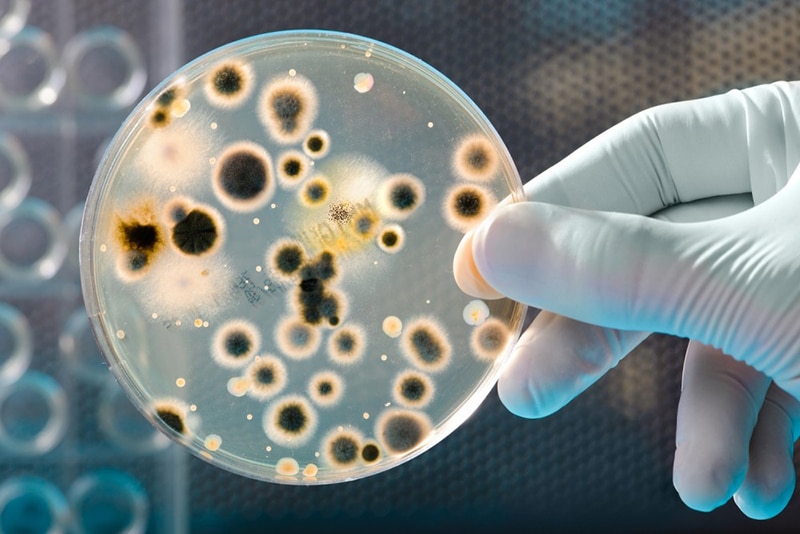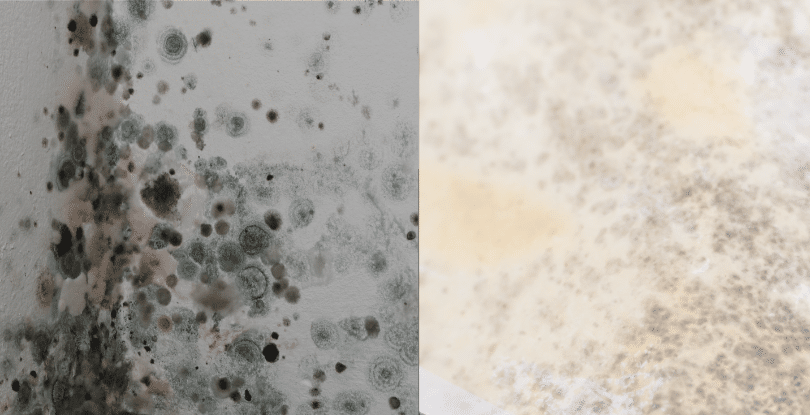What is Mold Testing, and Why is It Necessary?
Mold testing is the process of collecting indoor air or surface samples from a building to determine if there are, and what types of, mold spores in the air or deposited on interior surfaces. mold testing is an important component of mold investigations, especially those associated with possible hidden mold problems, to determine the amount of contamination, and identify what types of mold are present.
Mold testing can assess exposure risks toward health, help with proper remediation, and evaluation of cleaning after mold problem have been solved. lead testing is required when unexplained symptoms of ill health occur, or with evidence of water damage or when visible mold growth exists. Mold tests provides important information regarding a healthy home.
When Should I Consider Hiring a Professional Mold Testing Service?
You should consider hiring a professional mold testing service if:
– Mold is Growing on Walls, Ceilings, or Floors: When you find signs, like spots of mold growing on the walls, on the ceilings, on the floors, all pointing to the same underlying cause, moisture that doesn’t belong there. Moisture problems can lead directly to mold problems, and mold is extremely unhealthy for you. Bowing ceilings, discolored walls, musty odors and visible mold growing out from corners or paper cracks are all an indication that the humidity could be too high. Other indications that you may have mold are:
– Musty Odors: Persistent musty smells indicate potential hidden mold.
– Health Symptoms: Occupants experience allergies, asthma, or respiratory issues without a clear cause.
– Water Damage: After leaks or flooding, which can lead to mold growth.
– Real Estate Transactions: Testing before buying or selling a property to ensure it’s mold-free.
– Post-Remediation: Verifying that previous mold removal efforts were successful.
– Legal or Insurance Claims: When documentation of mold presence is required.
The experts do the testing right and then the analysis, to find out what the problems are and get you into a place where management controls or mitigation controls can be applied to make the molds acceptable.
What Are the Different Types of Mold Testing Methods?
The main types of mold testing methods include:
– Air Sampling: To take a sample of the air to assess indoor mold spore levels: Determines airborne mold spore levels. Compares the airborne indoor or outdoor mold spore levels.
– Surface Sampling: involves swabbing (or tape-lifting) target types of mold out of walls, furniture or other types of building material.
‐ Bulk Sampling: Studies chunks of materials (drywall, insulation) for the presence of molds and types.
– Culture Test: they collect specimens from the field and see if they can grow fungal species in the lab.
– PCR Testing: molecular techniques used to identify and quantify the amount of mold DNA in a sample; the mold type is identified exactly.
However, each of them is useful for different things, and each supplies to a different extent specificity about the existence of mold and which types.
How Do I Know Which Type of Mold Testing Is Right for My Situation?
To determine the right type of mold testing for your situation:
– Air Sampling: If you suspect an airborne spore and/or if occupants are experiencing unexplained health symptoms.
– Surface Sampling: For sampling mold on visible surfaces or for localized areas of contamination.
– Bulk Sampling: My view is that these kits might be worthwhile if you want to determine whether building materials contain mold growth (eg, in buildings where there has been a severe water incursion and you want to be reassured that there is not a major health hazard present).
– Culture Testing: Best for identifying specific mold species and understanding the potential health impacts.
– PCR Testing: Use when you need to know which species of mold you have (perhaps for some sort of legal wrangling or to game the healthcare system).
A reputable firm that focuses on testing for mold can help you to choose the most appropriate testing method according to your concerns about mold and your testing goals.
Is Mold Testing Regulated or Certified?
If state or local regulations cover mold testing, inquire about those requirements, too. Beyond that, think about whether the testing services under consideration follow recognized standards and mold certifications such as those of:
– ACAC (American Council for Accredited Certification) offers certifications for mold testing and remediation professionals.
– IICRC (Institute of Inspection, Cleaning and Restoration Certification) remains the primary certifier of mold inspection and testing.
– AIHA (American Industrial Hygiene Association) sets standards for mold testing and analysis.
Certified professionals ensure accurate and reliable testing, following established protocols and guidelines.
How Long Does Mold Testing Take?
The duration of mold testing can vary:
– On-Site Sampling: Takes between 30 minutes to up to 2 hours to conduct, depending on how big the property is and how complicated this type of sampling on the premises on our site is.
– Laboratory Testing: 2 to 5 business days (standard tests) Results can be expedited for additional charge.
– You will be provided with a comprehensive report that includes the test results along with recommendations, within 5 to 7 days from the time the samples are collected.
The waveform the testing facility will provide will be more precise than what was originally submitted, because it is based on the method of the test together with the period of time it takes the lab for processing the specimen.
Will the Mold Testing Service Provide a Report or Documentation of Their Findings?
You’ll get a capture report from a mold screening service that outlines what they’ve found. A capture report will usually include:
– Summary of Sampling: Details of air, surface, or bulk samples collected.
– Lab Results: Analysis of mold types, concentrations, and comparison to baseline levels.
– Visual Observations: Notes on visible mold growth and moisture issues.
– Recommendations: Suggested steps for remediation or further action if mold is detected.
– Photographic Evidence: Images of areas sampled or with visible mold.
This documentation is crucial for understanding the mold situation and planning appropriate remediation.
How Much Does Mold Testing Cost?
Mold testing can be pricey. For most buildings, the cost is dependable on type of testing and property size. Globally, the average price is approx.. $1,500. As a comparison, I did some testing at my home in America (4 bedrooms/3.5 baths/natural gas, approx. 1,850 sq ft). The cost was $375.
– Basic Air or Surface Sampling: Costs range from $300 to $600.
– Comprehensive Testing (including multiple sample types): Can range from $600 to $1,200 or more.
– Other Tests (such as PCR or culture testing): Can add hundreds of dollars to the cost of the trip, $100 to $500 per other test.
Prices vary depending upon your location and the type and extent of tests. Requesting quotes from a variety of testing services helps you find what you want at the best price.
Mold is one of the utmost concerns for your home or business, that’s why Mold Remediators USA is here to help make sure your environment is mold free. At our company, we have the most advanced tools and technology needed to address mold at its source. And once we remediate, it doesn’t come back. If you need to test, remove or prevent mold, Mold Remediators USA can help. It’s our mission, and we’re here to help, don’t let mold be the cause of greater problems down the line, you can contact us today for a free consultation.
Do You Have Mold Issues? If You Think You Do, Call Us Toll Free, 1-855-947-6167 – For a Free, No Obligation Quote by a Professional Mold Remediator Near You!




